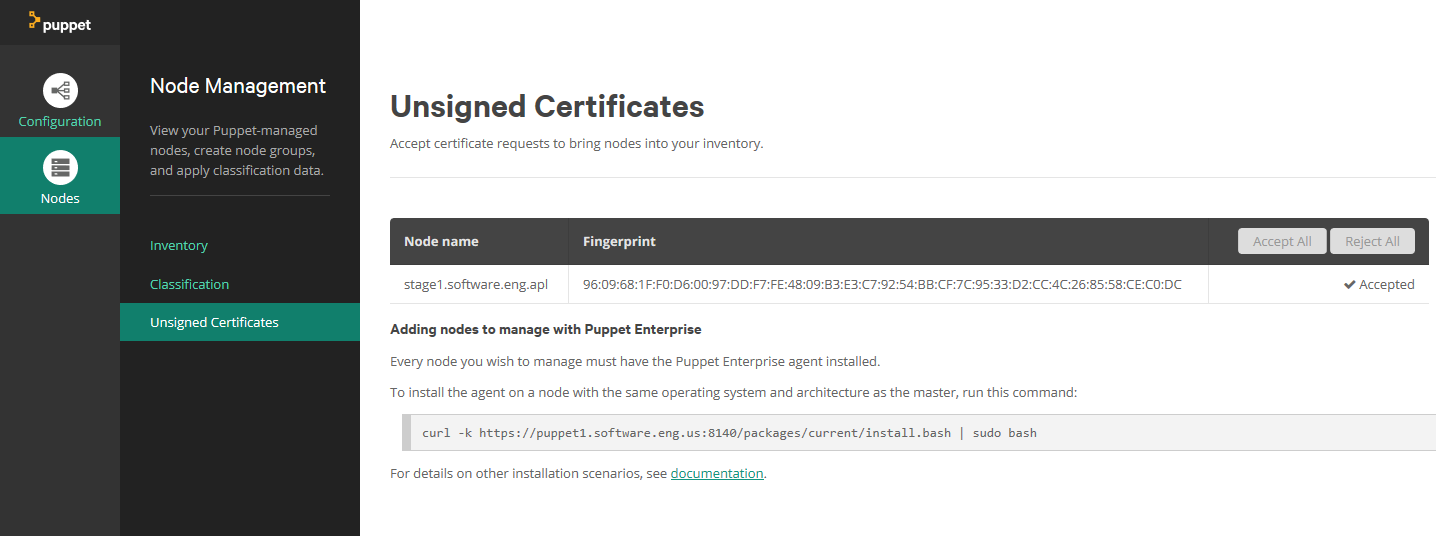
After your Puppet Master server is installed, you will next want to install Puppet Agent on computers that you want to manage using the Puppet Master.

If the operating system of the agent is exactly the same as the Puppet Master server, issue the following command on the agent.
[john.doe@server1 ~]# curl -k https://example.com:8140/packages/current/install.bash | sudo bash
If the above fails, download and install the Puppet Collection 1 repository from https://yum.puppetlabs.com. In this example, the EL 7 release is installed.
rpm -Uvh https://yum.puppetlabs.com/puppetlabs-release-el-7.noarch.rpm
Use apt-get or yum to install puppet-agent.
yum install puppet-agent
The ps command can be used to determine if your system is using init or systemd. If PID 1 is init, then you will use the service command. If PID 1 is systemd, then you will use the systemctl command.
If your system is using systemd, use the systemctl command to start and enable puppet.
systemctl enable puppet
systemctl start puppet
systemctl status puppet
If your system is using init, use the chkconfig and service commands to start and enable puppet.
chkconfig puppet on
service puppet start
service puppet status
Issue the following command to request a certificate from the Puppet Master. Do not be too concered if Exiting; no certificate found and waitforcert is disabled is displayed.
puppet agent --test
. . .
Exiting; no certificate found and waitforcert is disabled
In the left panel of Puppet Master, select Nodes. Select Unsigned Certificates. There should be a request from the Puppet Agent. It may take some time for the request to appear. In this example, there was a request from a Puppet Agent with hostname stage1.software.eng.us, and the request was approved.

In a few minutes, the Puppet Agent should show in Inventory. In this example, the Agent with hostname stage1.software.eng.us now appears in inventory.

This will create a certificate on the Puppet Agent, in the /etc/puppetlabs/puppet/ssl/certs/ directory. In this example, the name of the certificate will be stage1.your.domain.name.pem. The following command can be used to verify that the fingerprint of the certificate on the Puppet Agent matches the fingerprint of the certificate on the Puppet Master.
puppet agent --fingerprint
. . .
(SHA256) 96:09:68:1F:F0:D6:00:97:DD:F7:FE:48:09:B3:E3:C7:92:54:BB:CF:7C:95:33:D2:CC:4C:26:85:58:CE:C0:DC
Did you find this article helpful?
If so, consider buying me a coffee over at 